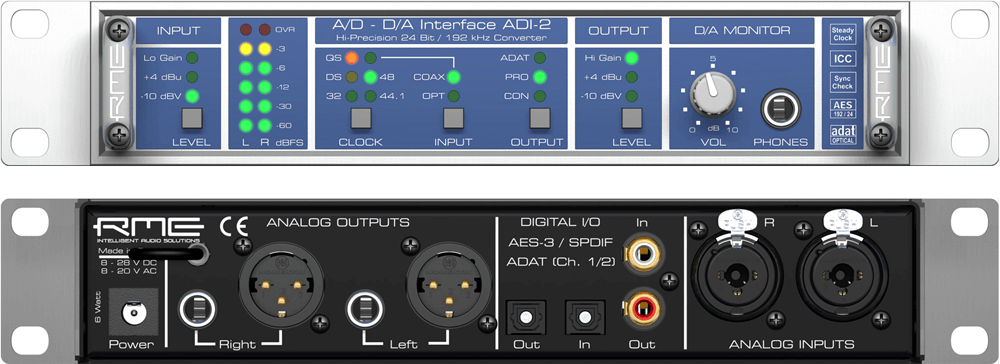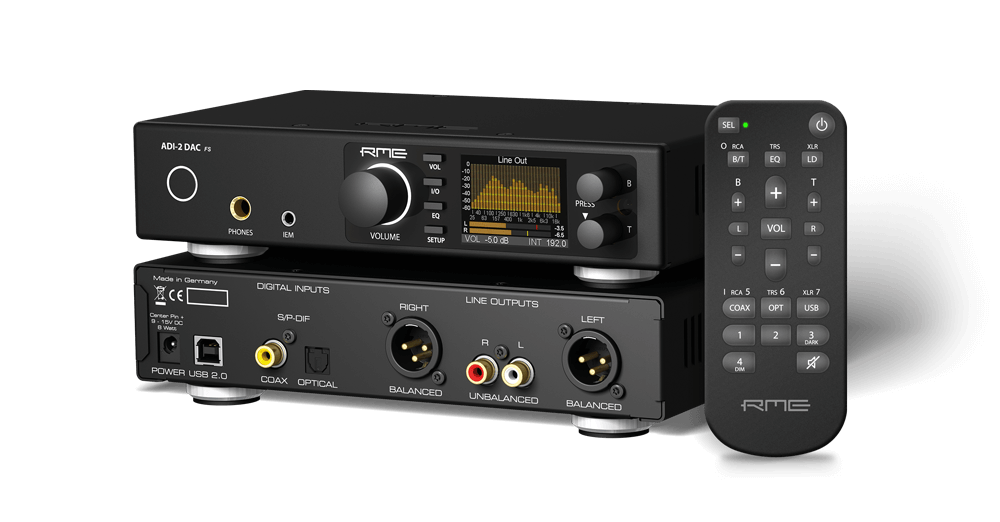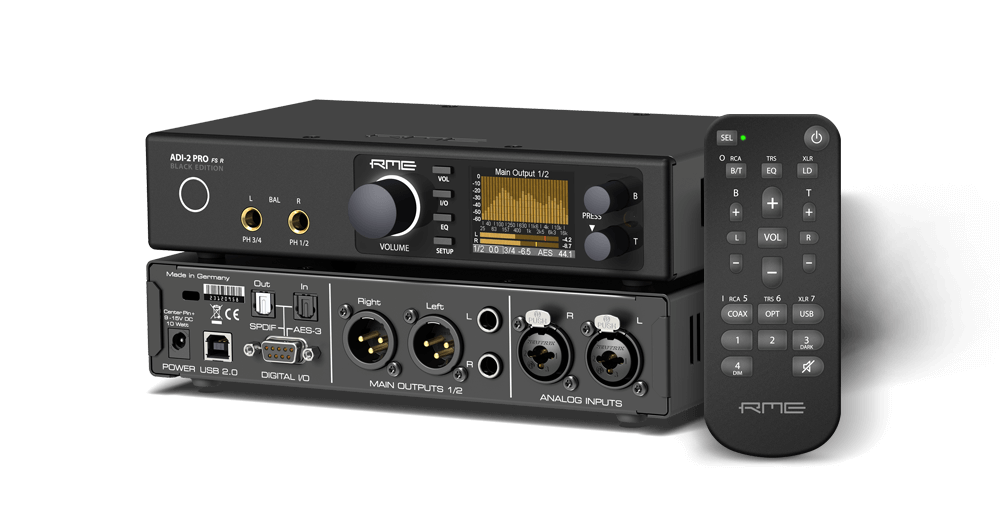Topic: BRIEF Tutorial of the Equalizer settings RME ADI-2 and ADI-2 PRO DAC
For your convenience:
Start by pressing the EQ button AT THE FRONTSIDE of your DAC!
To scroll to the 7 Filter Modes (BB>B1>B2>B3>B4>B5>BT):
• Press the LARGE Volume knob for each of the Filter Modes
To change the GAIN of each of the Filter Modes:
• Turn the LARGE Volume knob
To change the FREQUENCY of each of the Filter Modes:
• Turn Encoder 1 knob
To change the QUALITY Factor of each of the Filter Modes:
• Turn Encoder 2 knob
Filter Mode 1) Gain 1) Frequency 1) Quality Factor
BB Band Bass G +0.0 F 100 Q 1.0
B1 Peak or Shelf or Low Cut G +0.0 F 100 Q 1.0
B2 Peak or Shelf G +0.0 F 500 Q 1.0
B3 Peak or Shelf G +0.0 F 1.0k Q 1.0
B4 Peak or Shelf G +0.0 F 5.0k Q 1.0
B5 Peak or Shelf or Hi Cut G +0.0 F 10.0k Q 1.0
BT Band Treble G +0.0 F 10.0k Q 1.0
1) Default values RME ADI-2
BB/Band Bass and BT/Band Treble
Are only accessible after setting Option: Load B/T w. Preset: “On”
Peak (bell-shaped) filter
This type of filter is used to boost or cut a specific frequency band, around the center frequency of the filter. (Bell shapes are peak filters)
Shelf (shelving) filter
A shelf, or shelving, filter is used to boost or cut all the frequency content above or below a specified frequency—the cutoff frequency.
For more detailed information about Equalizer filters:
https://www.sonarworks.com/blog/learn/eq-curves-defined
https://flypaper.soundfly.com/produce/s … them-both/
https://rebootrecording.com/high-and-low-shelf/


